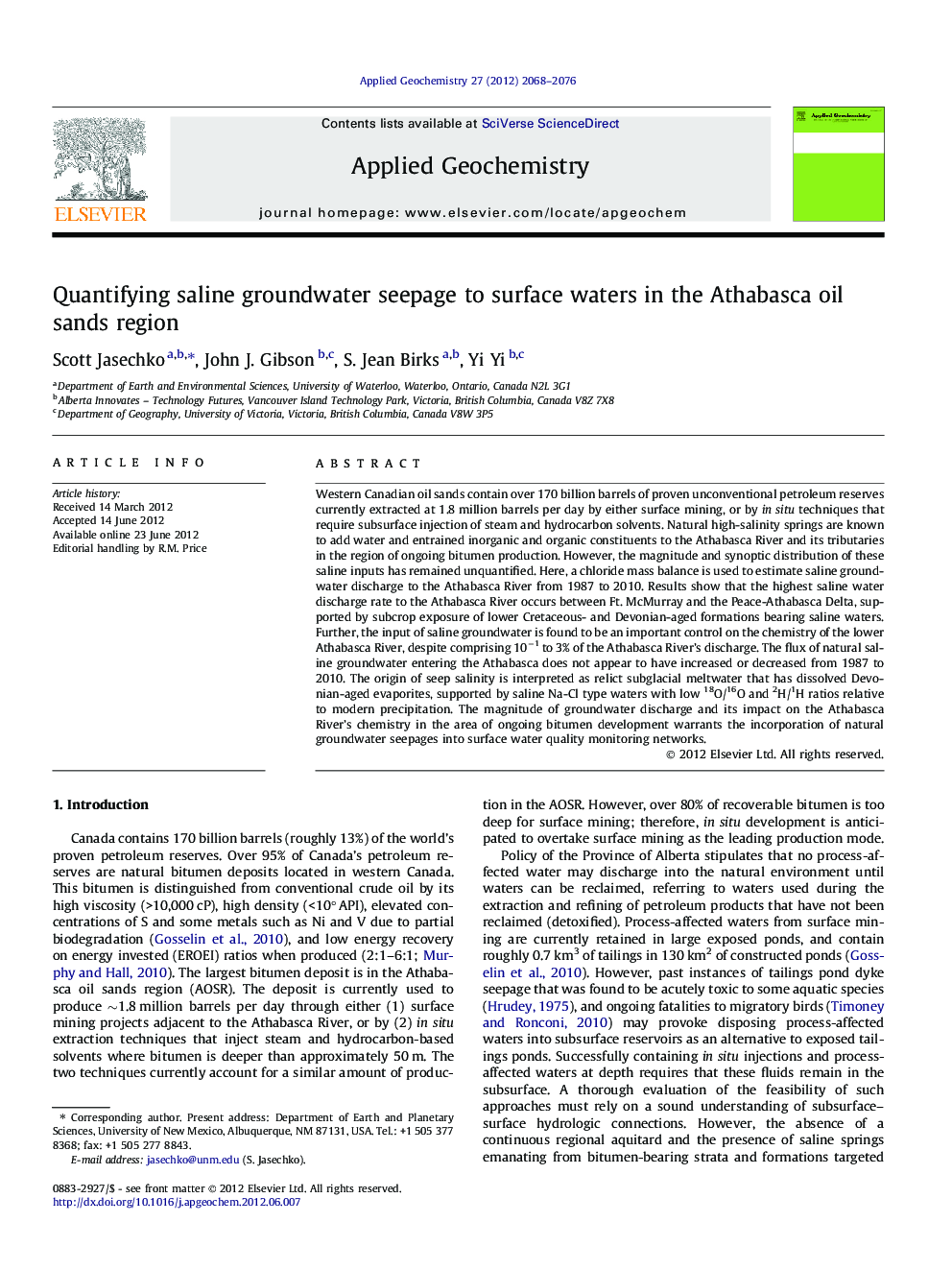| کد مقاله | کد نشریه | سال انتشار | مقاله انگلیسی | نسخه تمام متن |
|---|---|---|---|---|
| 4436182 | 1310668 | 2012 | 9 صفحه PDF | دانلود رایگان |

Western Canadian oil sands contain over 170 billion barrels of proven unconventional petroleum reserves currently extracted at 1.8 million barrels per day by either surface mining, or by in situ techniques that require subsurface injection of steam and hydrocarbon solvents. Natural high-salinity springs are known to add water and entrained inorganic and organic constituents to the Athabasca River and its tributaries in the region of ongoing bitumen production. However, the magnitude and synoptic distribution of these saline inputs has remained unquantified. Here, a chloride mass balance is used to estimate saline groundwater discharge to the Athabasca River from 1987 to 2010. Results show that the highest saline water discharge rate to the Athabasca River occurs between Ft. McMurray and the Peace-Athabasca Delta, supported by subcrop exposure of lower Cretaceous- and Devonian-aged formations bearing saline waters. Further, the input of saline groundwater is found to be an important control on the chemistry of the lower Athabasca River, despite comprising 10−1 to 3% of the Athabasca River’s discharge. The flux of natural saline groundwater entering the Athabasca does not appear to have increased or decreased from 1987 to 2010. The origin of seep salinity is interpreted as relict subglacial meltwater that has dissolved Devonian-aged evaporites, supported by saline Na-Cl type waters with low 18O/16O and 2H/1H ratios relative to modern precipitation. The magnitude of groundwater discharge and its impact on the Athabasca River’s chemistry in the area of ongoing bitumen development warrants the incorporation of natural groundwater seepages into surface water quality monitoring networks.
► Target formations for bitumen extraction may actively discharge fluids to the surface.
► Natural saline groundwater discharges influence the Athabasca River’s chemistry.
► Natural saline groundwater discharges in the AOSR are constant for 1987–2010.
► AOSR groundwaters are glaciogenic with solutes derived from evaporite dissolution.
Journal: Applied Geochemistry - Volume 27, Issue 10, October 2012, Pages 2068–2076